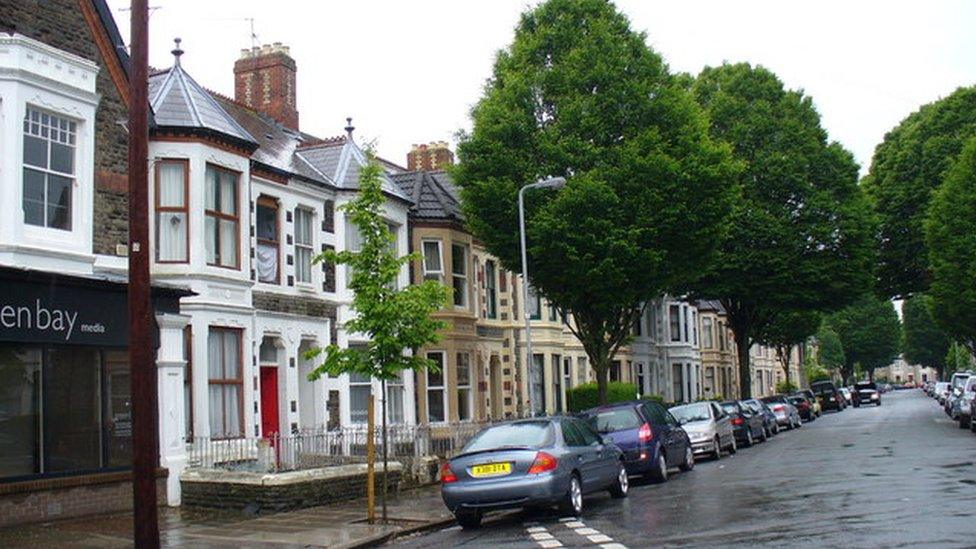Reporter tries out Cardiff's 'safer' cycle routes
- Published
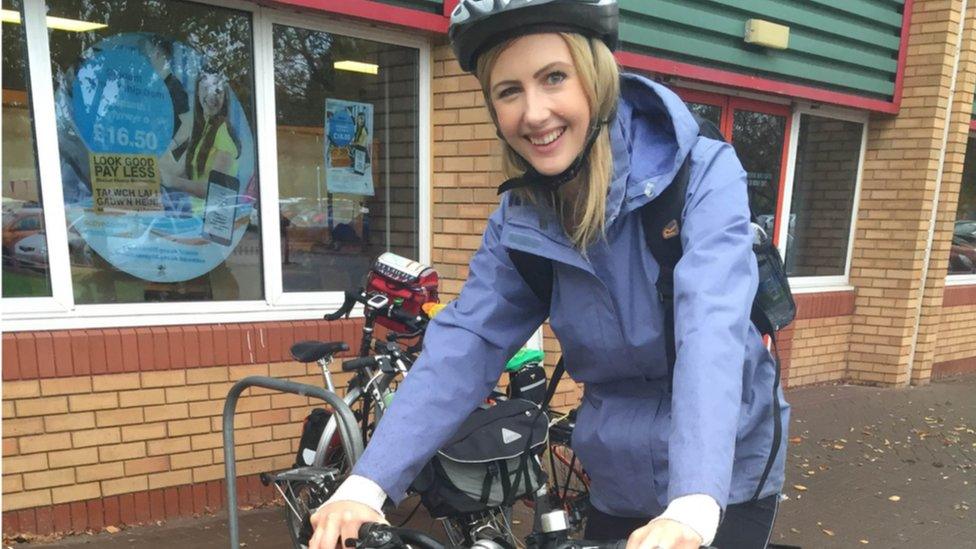
The brave grin was not fooling anyone - bike marshals stuck closely to my side throughout
"Stay together, mind the pedestrians because there's a lot of them and remember you are a vehicle entitled to the road just like the big cars and lorries," our cycle guides shouted as we pedalled off to experience the best, and worst, of cycling in Cardiff.
As someone whose only experience of bikes over the past decade has been spin class, and not very many of those, I was apprehensive about being sent on the group city ride with Cardiff council, Sustrans and other journalists, following a report into cycling in the city, external.
Everyone else brought their own bike and helmet, dressed like professionals.
"How many hire bikes do we need?"
"Just the one. For Carys."
Within a couple of minutes of the group setting off, carefully indicating and safely crossing into the right lane of a busy junction, a large BMW shot past - cutting us off to push to the front of the queue for the red light and coming within a whisker of hitting my (very shaky) left arm.
The driver offered a hand gesture which may have been an apology, a thank you or something else, it was difficult to see through the drizzle pelting into my face.
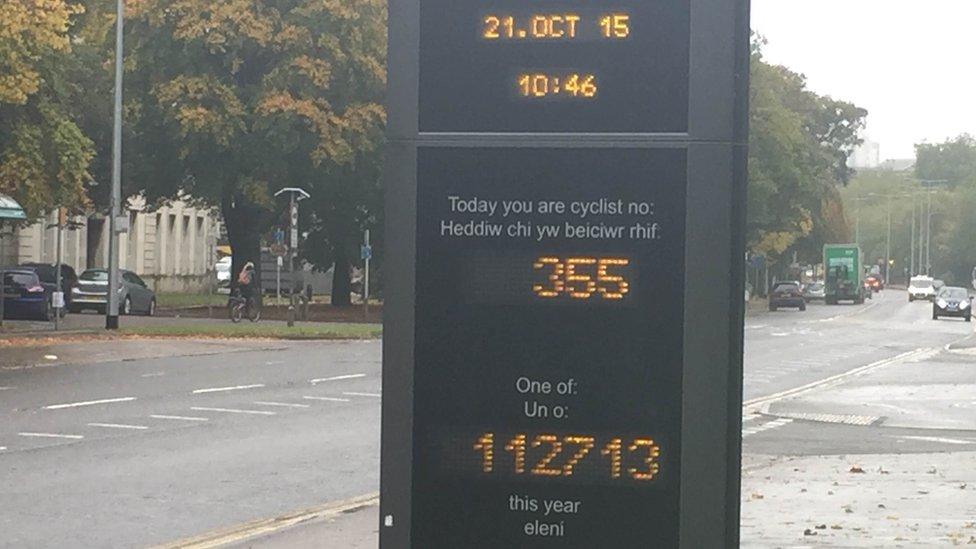
I am in the 28% of Cardiff residents who do not ride a bike but would like to, external and for those first few minutes, I felt quite vindicated in my hesitation.
All my worst fears were true - motorists were impatient and inconsiderate, the roads were busy, everyone seemed to be staring angrily into our backs and it is difficult to name many situations where you are more exposed and vulnerable to a traffic accident than as an inexperienced cyclist in a city centre.
But I kept telling myself the statistic we heard at the beginning of the ride - there is only one serious injury for every 4.3 million miles pedalled around the capital.
As we continued on our 4.5 mile (7.2km) ride around Cathays, the guides rode ahead, checking junctions to wave us through, signalling when to dismount because of the lack of lowered pavement curbs and occasionally stopping traffic so the group could remain together.
Cycling in Cardiff started to feel a lot safer and I even gained enough confidence to let loose my death grip on the handlebars for at least two seconds to indicate with the group.
But I could not help wondering how different the experience would have been alone - not surrounded by people specifically looking out for my wellbeing, not to mention that of the council cabinet member who joined us.
We quickly reached quieter 20mph roads and cycle paths. Cars seemed to respect the white line separating them from us, slowing down or even stopping rather than cutting into bike lanes.
This must be one of the "good infrastructure areas" - Cardiff council and Sustrans' aim for the whole city. I could even imagine doing this, even without my biking babysitters.
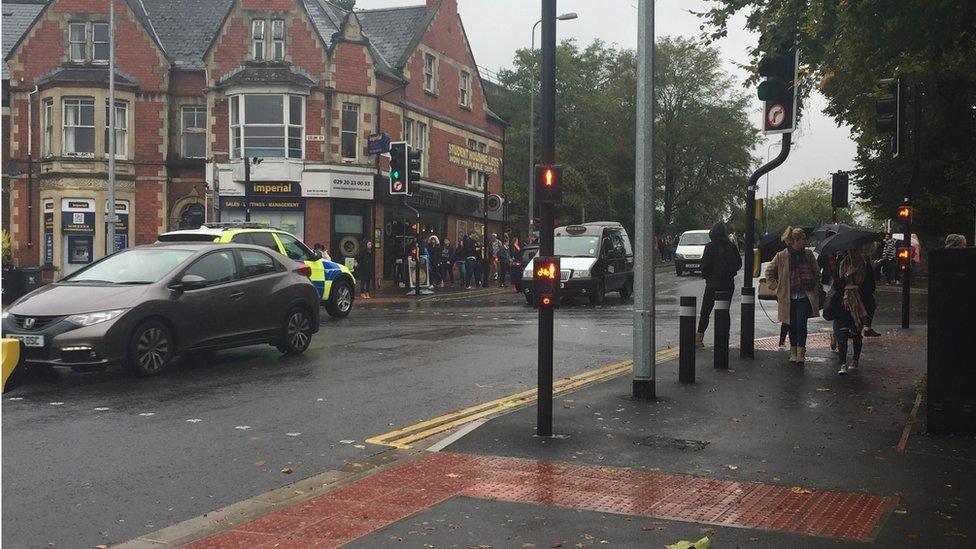
This Cathays junction is notoriously difficult for cyclists to navigate, I was told, and we did not even attempt to tackle it without dismounting
Margaret Jones, the guide who took me under her wing, pointed out hazards as we went along.
Recognising that my lack of confidence on a bike generally was not helping she recommended the roads in Cardiff Bay for practice.
"Get confident enough on those roads to be able to take out your water bottle and have a sip. Then letting go to indicate will seem like nothing," she said.
A busy junction near the school of music was too difficult to navigate, so we dismounted and crossed with the pedestrians, staying on foot until we had cleared the majority of the traffic and large crowds of students.
A few more minutes of pleasant, easy cycling followed as we navigated 20mph streets until we encountered roadworks which had reduced the road to one lane.
"Construction companies don't always, in fact hardly ever, think about cyclists when they're planning roadworks," Ms Jones tells me.
"The timing of the traffic lights will usually accommodate cars' speeds so it doesn't allow enough time for a cyclist. And someone's turned a 20mph sign over there the wrong way round, I mean, for goodness' sake people, behave."
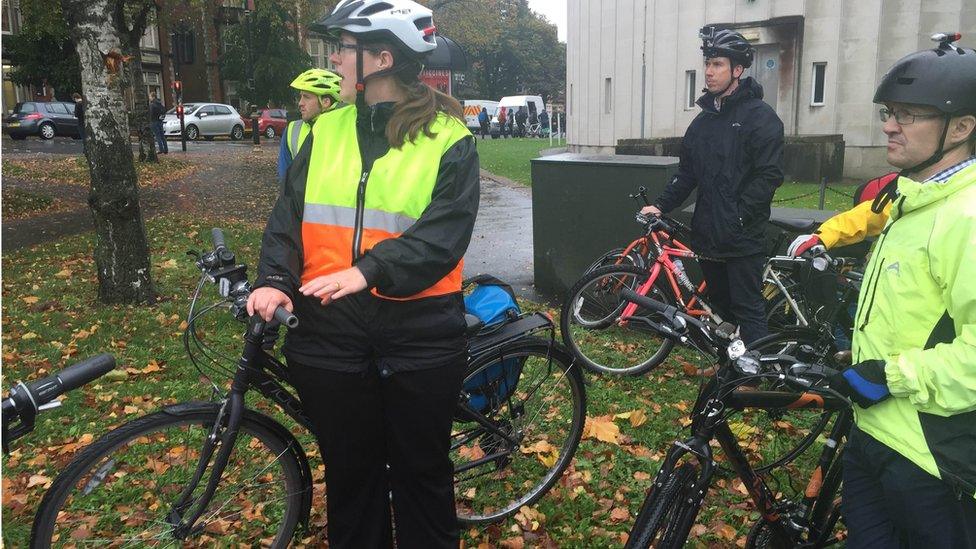
Again, the guides block the other end of the traffic lights so we can all make it through safely - but I can imagine that being a nervous guessing game for a lone cyclist.
Despite the attitudes of some motorists towards cyclists - even those who adhere to every rule of the road - it was clear that a great deal has been done to keep riders safe in the capital.
There are cycle lanes where I had no clue they existed and signs showing motorists just how many bikes were passing through. Every time a road started to feel dangerous we seemed able to branch off either to a cycle path, through a park or to a quieter route.
At some point during the second half of the ride, I realise I am enjoying myself.
The council says the population of Cardiff will increase by a quarter over 25 years, meaning the number of cars on the roads will increase too.
One of the ways to get cars off the roads is to make cycling a more attractive and safer option - there are already 71 miles (114km) of bike routes in Cardiff and plans for more.
"It is my mission now to get you cycling regularly in Cardiff," Ms Jones tells me as we arrive, dishevelled but happy, back at our starting point.
She rushes off to get me a cycle map from the leisure centre.
Who am I to argue with that?
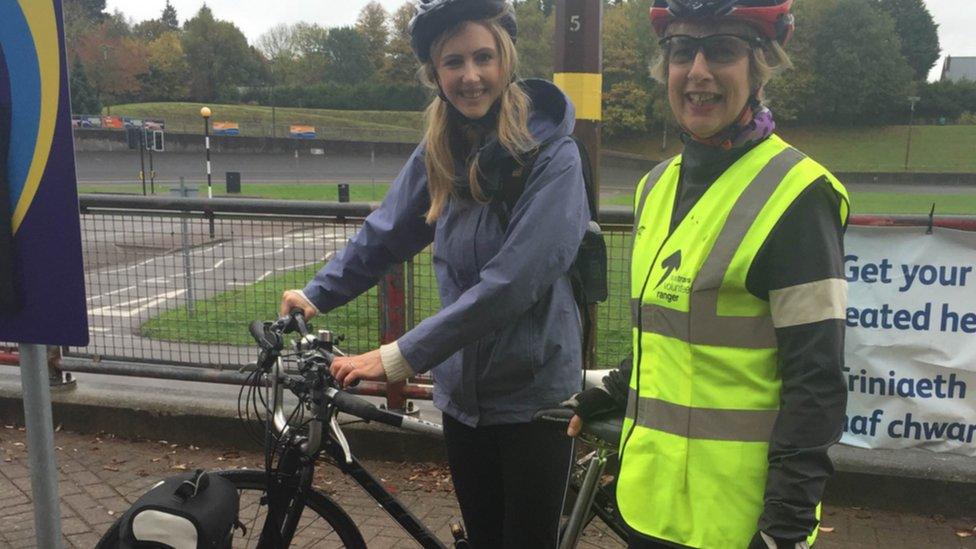
"It is my mission now to get you cycling regularly in Cardiff," Margaret Jones tells me
- Published21 October 2015
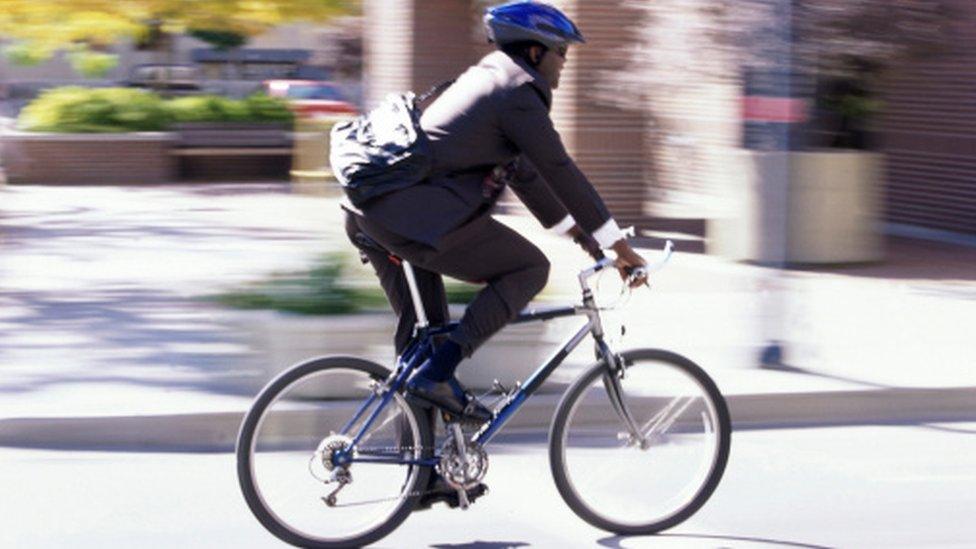
- Published21 October 2015

- Published12 October 2015
